乙二醇二甲基丙烯酸酯
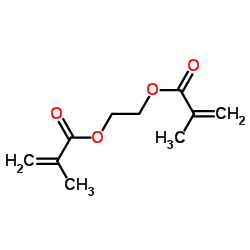
乙二醇二甲基丙烯酸酯结构式

|
常用名 | 乙二醇二甲基丙烯酸酯 | 英文名 | Ethylene methacrylate |
|---|---|---|---|---|
| CAS号 | 97-90-5 | 分子量 | 198.216 | |
| 密度 | 1.0±0.1 g/cm3 | 沸点 | 260.6±13.0 °C at 760 mmHg | |
| 分子式 | C10H14O4 | 熔点 | -40 °C | |
| MSDS | 中文版 美版 | 闪点 | 121.8±18.2 °C | |
| 符号 |

GHS07 |
信号词 | Warning |
乙二醇二甲基丙烯酸酯用途Ethylene glycol dimethacrylate 是一种甲基丙烯酸酯单体,对人牙龈成纤维细胞 (HGF) 具有细胞毒性和基因毒性作用。Ethylene glycol dimethacrylate 会增加细胞内活性氧 (ROS) 的产生,导致 DNA 损伤,增加细胞凋亡 (apoptosis) 并导致细胞周期停滞在 G1/G0 期。 |
| 中文名 | 乙二醇二甲基丙烯酸酯 |
|---|---|
| 英文名 | ethylene glycol dimethacrylate |
| 中文别名 | 乙二醇 HEMA-甲基丙烯酸酯 | 2-甲基-2-丙烯酸-1,2-乙二醇酯 | 二(甲基丙烯酸)乙二醇酯 | 双甲基丙烯酸乙二醇酯 | 二甲基丙烯酸乙二醇酯 | 甲基丙烯酸乙二醇酯 |
| 英文别名 | 更多 |
| 描述 | Ethylene glycol dimethacrylate 是一种甲基丙烯酸酯单体,对人牙龈成纤维细胞 (HGF) 具有细胞毒性和基因毒性作用。Ethylene glycol dimethacrylate 会增加细胞内活性氧 (ROS) 的产生,导致 DNA 损伤,增加细胞凋亡 (apoptosis) 并导致细胞周期停滞在 G1/G0 期。 |
|---|---|
| 相关类别 | |
| 参考文献 |
| 密度 | 1.0±0.1 g/cm3 |
|---|---|
| 沸点 | 260.6±13.0 °C at 760 mmHg |
| 熔点 | -40 °C |
| 分子式 | C10H14O4 |
| 分子量 | 198.216 |
| 闪点 | 121.8±18.2 °C |
| 精确质量 | 198.089203 |
| PSA | 52.60000 |
| LogP | 2.78 |
| 外观性状 | 无色液体 |
| 蒸汽密度 | >1 (vs air) |
| 蒸汽压 | 0.0±0.5 mmHg at 25°C |
| 折射率 | 1.449 |
| 储存条件 | 储存于阴凉、通风的库房。远离火种、热源。防止阳光直射。库温不宜超过30℃。保持容器密封,严禁与空气接触。应与氧化剂、酸类、碱类分开存放,切忌混储。不宜久存,以免变质。配备相应品种和数量的消防器材。储区应备有泄漏应急处理设备和合适的收容材料。 |
| 稳定性 | 避免光照。避免与强氧化剂、强碱、强酸接触。微溶于水。 易燃、易聚合 |
| 水溶解性 | soluble |
| 分子结构 | 1、 摩尔折射率:51.06 2、 摩尔体积(cm3/mol):190.3 3、 等张比容(90.2K):449.8 4、 表面张力(dyne/cm):31.1 5、 介电常数: 6、 偶极距(10-24cm3): 7、 极化率:20.24 |
| 计算化学 | 1、 疏水参数计算参考值(XlogP):1.9 2、 氢键供体数量:0 3、 氢键受体数量:4 4、 可旋转化学键数量:7 5、 互变异构体数量: 6、 拓扑分子极性表面积(TPSA):52.6 7、 重原子数量:14 8、 表面电荷:0 9、 复杂度:237 10、同位素原子数量:0 11、确定原子立构中心数量:0 12、不确定原子立构中心数量:0 13、确定化学键立构中心数量:0 14、不确定化学键立构中心数量:0 15、共价键单元数量:1 |
| 更多 | 1. 性状:无色液体。 2. 密度(g/mL,25℃):1.054 3. 相对蒸汽密度(g/mL,空气=1):未确定 4. 熔点(ºC):-20 5. 沸点(ºC,常压):97 6. 沸点(ºC, kPa):未确定 7. 折射率:1.4522 8. 闪点(ºC):>110 9. 比旋光度(º):未确定 10. 自燃点或引燃温度(ºC): 未确定 11. 蒸气压(mmHg, 21.1ºC):<0.1 12. 饱和蒸气压(kPa, 20ºC):未确定 13. 燃烧热(KJ/mol):未确定 14. 临界温度(ºC):未确定 15. 临界压力(KPa):未确定 16. 油水(辛醇/水)分配系数的对数值:未确定 17. 爆炸上限(%,V/V):未确定 18. 爆炸下限(%,V/V):未确定 19. 溶解性:不溶于水,溶于部分有机溶剂。 |
|
|||||||||||||||||||||||||||||||||||||||||||||||||||||||||||||||||||||||||||||||||||||||||||||||||||||||||||||||||||||||||||||||||||||||||||||||||||||||||||||||||||||||||||||||||||||||||||||||||||||||||||||||||||||||||||||||||||||||||||||||||||||||
|
乙二醇二甲基丙烯酸酯毒理学数据: 1、急性毒性:大鼠经口LD50:3300mg/kg; 大鼠腹膜腔LD50:2800mg/kg; 小鼠经口LD50:2mg/kg; 2、致突变性:在哺乳动物躯体细胞中突变实验:小鼠淋巴细胞,5820μmol/L; 乙二醇二甲基丙烯酸酯生态学数据: 该物质对环境可能有危害,建议不要让其进入环境。 |
| 符号 |

GHS07 |
|---|---|
| 信号词 | Warning |
| 危害声明 | H317-H335 |
| 警示性声明 | P280-P304 + P340 + P312-P333 + P313 |
| 个人防护装备 | Eyeshields;Faceshields;full-face respirator (US);Gloves;multi-purpose combination respirator cartridge (US);type ABEK (EN14387) respirator filter |
| 危害码 (欧洲) | Xi:Irritant; |
| 风险声明 (欧洲) | R37;R43 |
| 安全声明 (欧洲) | S24-S37 |
| 危险品运输编码 | UN3334 9 |
| WGK德国 | 1 |
| RTECS号 | OZ4400000 |
| 危险类别 | 9.0 |
| 海关编码 | 2916140000 |

| 海关编码 | 2916190090 |
|---|---|
| 中文概述 | 2916190090 其他不饱和无环一元羧酸(包括其酸酐、酰卤化物,过氧化物和过氧酸以及它们的衍生物)。监管条件:AB(入境货物通关单,出境货物通关单)。增值税率:17.0%。退税率:9.0%。最惠国关税:6.5%。普通关税:30.0% |
| 申报要素 | 品名, 成分含量, 用途, 丙烯酸、丙烯酸盐或酯应报明包装 |
| 监管条件 | A.入境货物通关单 B.出境货物通关单 |
| 检验检疫 | R.进口食品卫生监督检验 S.出口食品卫生监督检验 M.进口商品检验 N.出口商品检验 |
| Summary | 2916190090 unsaturated acyclic monocarboxylic acids, their anhydrides, halides, peroxides, peroxyacids and their derivatives。supervision conditions:AB(certificate of inspection for goods inward,certificate of inspection for goods outward)。VAT:17.0%。tax rebate rate:9.0%。MFN tariff:6.5%。general tariff:30.0% |
|
Inverse colloidal crystal membranes for hydrophobic interaction membrane chromatography.
J. Sep. Sci. 38 , 2819-25, (2015) Hydrophobic interaction membrane chromatography has gained interest due to its excellent performance in the purification of humanized monoclonal antibodies. The membrane material used in hydrophobic i... |
|
|
Organic monolith frits encased in polyether ether ketone tubing with improved durability for liquid chromatography.
J. Sep. Sci. 38 , 2938-44, (2015) This study introduces a preparation method for polymer-encased monolith frits with improved durability for liquid chromatography columns. The inner surface of the polyether ether ketone tubing is pret... |
|
|
Interaction of intraocular lenses with fibronectin and human lens epithelial cells: Effect of chemical composition and aging.
J. Biomed. Mater. Res. A 103 , 3843-51, (2015) The aim of this study is to investigate in vitro interactions between hydrophobic acrylate intraocular lenses (IOLs) and their biological environment. The influence of lens chemical composition and ag... |
| Ethylene methacrylate |
| Ethylene dimethacrylate |
| Glycol dimethacrylate |
| Ethane-1,2-diyl bis(2-methylprop-2-enoate) |
| 1UY1&VO2OVY1&U1 |
| MFCD00008590 |
| 2-Propenoic acid, 2-methyl-, 1,2-ethanediyl ester |
| Ethyldiol methacrylate |
| Ethane-1,2-diyl bis(2-methylacrylate) |
| EINECS 202-617-2 |
| 1,2-Ethanediyl bis(2-methylacrylate) |
| Methacrylic acid ethylene ester |
| 1,2-Ethanediol dimethacrylate |
| Ethylene glycol dimethacrylate |

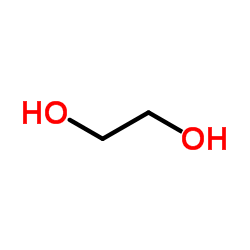 CAS号107-21-1
CAS号107-21-1 CAS号80-62-6
CAS号80-62-6 CAS号75-21-8
CAS号75-21-8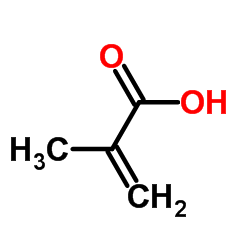 CAS号79-41-4
CAS号79-41-4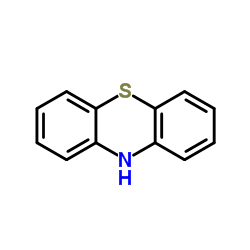 CAS号92-84-2
CAS号92-84-2 CAS号4513-56-8
CAS号4513-56-8 CAS号540-51-2
CAS号540-51-2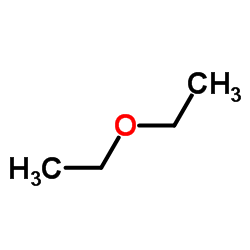 CAS号60-29-7
CAS号60-29-7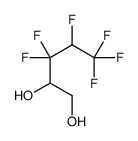 CAS号121628-30-6
CAS号121628-30-6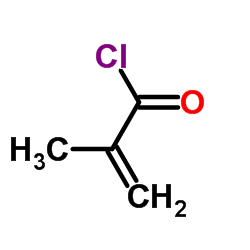 CAS号920-46-7
CAS号920-46-7 CAS号96-05-9
CAS号96-05-9 CAS号623-27-8
CAS号623-27-8
